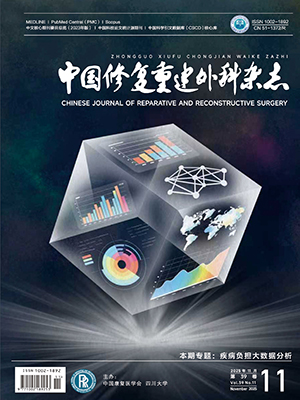Objective To investigate the clinical curative effect of distal phalanx of great toe and soft tissue orthopaedics for treatment of obstinateingrown nail. Methods From October 1997 to May 2006,31 patients(38 nails) suffering from obstinate ingrown nail were treated by the distal phalanx of great toe and soft tissue orthopaedics. There were 23 males(27 nails) and 8 females(11 nails) with an average age of 17.5 years(12-28 years). The disease course was 2years and 1 month to 14 years(average, 31-6 months). At the same time, thirty-eight patients with diseases of feet were selected randomly as controls. The depth of the nail groove was measured.The X-ray films were taken to calculate the rate of upward projection of tuberosity (r). Results Thedepth of the nail and r value of 31 patients were 2.87±0.31 mm and 0.149±0.013,respectively. There were statistically significant differences when compared with control group(1.06±0.10 mm and 0.060±0.019)(P lt;0.01). Thirty patients(37 nails) had a primary healing; 1 patient(1 nail) had a delayed healing. Twenty-nine patients(36 nails) were followed up for 8 to 29 months(average, 21 months). The appearance of the nail was satisfactory. No relapse occurred in all patients. Conclusion The upward projection of tuberosity of distal phalanx of great toe and deepened nail groove are the most important anatomical causes for ingrown nail. The distal phalanx of great toe and soft tissue orthopaedics is aneffective treatment for obstinate ingrown nail.
Citation: LI Jin,HONG Guangxiang,CHEN Zhenbing,et al.. CLINICAL STUDY ON TREATMENT OF OBSTINATE INGROWN NAIL WITH DISTAL PHALANX OF GREAT TOE AND SOFT TISSUE ORTHOPAEDICS. Chinese Journal of Reparative and Reconstructive Surgery, 2007, 21(9): 982-984. doi: Copy
Copyright © the editorial department of Chinese Journal of Reparative and Reconstructive Surgery of West China Medical Publisher. All rights reserved




